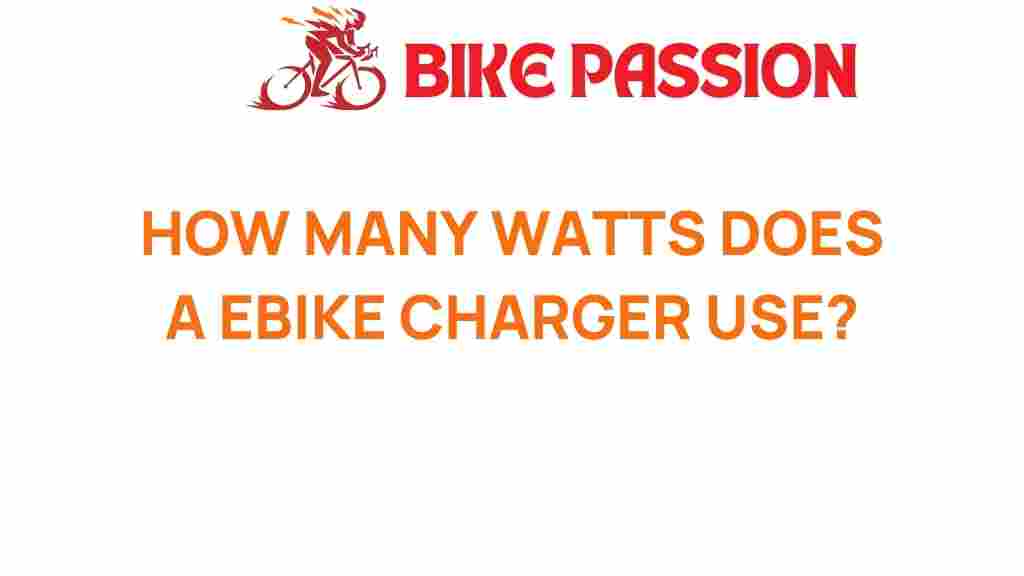Unraveling the Mystery: How Many Watts Does an eBike Charger Use?
As the popularity of electric bikes (eBikes) continues to rise, many potential riders are curious about their energy consumption, specifically regarding the eBike charger. Understanding the wattage of an eBike charger and its impact on energy consumption is essential for eco-conscious consumers looking to make informed choices about their transportation methods. In this article, we will delve into the details of eBike chargers, their wattage, charging efficiency, and how they contribute to sustainable and eco-friendly transport.
Understanding eBike Chargers and Their Wattage
An eBike charger is a device that converts AC (Alternating Current) from a wall outlet to DC (Direct Current) suitable for charging the battery of an electric bike. The wattage of an eBike charger indicates how much power it consumes while charging the battery, and it can vary depending on several factors, including:
- Charger Specifications: Different chargers are designed for various battery capacities and voltages.
- Battery Capacity: The larger the battery, the more wattage it typically requires for efficient charging.
- Charging Efficiency: This refers to how effectively the charger converts AC power to DC power, impacting overall energy consumption.
Typical Wattage of eBike Chargers
Most eBike chargers have a wattage range between 100W and 300W. Here’s a breakdown of common charger wattages:
- Low-Power Chargers (100W-150W): Suitable for smaller batteries (around 300-500Wh) and often used in commuter eBikes.
- Medium-Power Chargers (150W-250W): Ideal for mid-range batteries (around 500-700Wh) and commonly found in standard eBikes.
- High-Power Chargers (250W-300W): Designed for larger batteries (700Wh and above) found in high-performance eBikes.
Factors Influencing Energy Consumption
When evaluating the energy consumption of an eBike charger, several factors come into play:
- Charging Time: Longer charging times will result in higher energy consumption, even with lower wattage chargers.
- Charger Efficiency: A charger with high charging efficiency will waste less energy during the conversion process.
- Battery Condition: An older or damaged battery may take longer to charge, impacting overall energy use.
Calculating the Cost of Charging an eBike
To understand how much it costs to charge your eBike, you can use the following formula:
Cost = (Wattage × Charging Time (hours) × Electricity Rate (per kWh))
For example, if you have a 200W charger and it takes 4 hours to charge your eBike battery:
- Wattage: 200W
- Charging Time: 4 hours
- Electricity Rate: $0.13 per kWh
First, convert wattage to kilowatts:
200W = 0.2 kW
Now, multiply:
Cost = (0.2 kW × 4 hours × $0.13) = $0.10
This means it would cost approximately $0.10 to charge your eBike fully.
Charging Efficiency: Why It Matters
Charging efficiency is a crucial aspect of the eBike charger that affects overall energy consumption. A more efficient charger will convert a higher percentage of the AC input power into usable DC power. Here are some factors contributing to charging efficiency:
- Charger Quality: Higher-quality chargers often feature advanced technology that maximizes efficiency.
- Battery Management System (BMS): A good BMS can optimize charging cycles and prolong battery life.
- Heat Loss: Efficient chargers generate less heat, meaning more energy is directed towards charging the battery.
Sustainability and Eco-Friendly Transport
One of the significant advantages of using an eBike is its potential for sustainability. By understanding the wattage and energy consumption of eBike chargers, riders can make environmentally friendly choices. Here’s how eBikes contribute to sustainability:
- Reduced Carbon Footprint: Electric bikes emit fewer greenhouse gases compared to cars.
- Energy Efficiency: eBikes consume significantly less energy per mile than traditional vehicles.
- Battery Recycling: Many manufacturers offer recycling programs for old batteries, reducing waste.
Troubleshooting Common Charging Issues
Even with the best chargers, you might encounter issues. Here are some common problems and their solutions:
- Charger Not Working: Check if the charger is properly plugged in and if the outlet is functional.
- Long Charging Times: Ensure the charger is compatible with your battery and check for any battery damage.
- Overheating: If the charger or battery becomes too hot, unplug it immediately and allow it to cool down.
Conclusion
In summary, understanding how many watts an eBike charger uses is essential for energy-conscious riders. By considering factors such as wattage, charging efficiency, and energy consumption, you can make informed decisions that contribute to sustainable and eco-friendly transport. Electric bikes not only offer a practical alternative to traditional vehicles but also play a significant role in reducing our carbon footprint. For more information on green transportation, check out this comprehensive guide.
When you invest in an eBike, you’re not just buying a mode of transport; you’re also choosing a greener lifestyle. So, the next time you charge your eBike, remember that every watt counts towards a more sustainable future!
This article is in the category Tech and created by BikePassion Team
